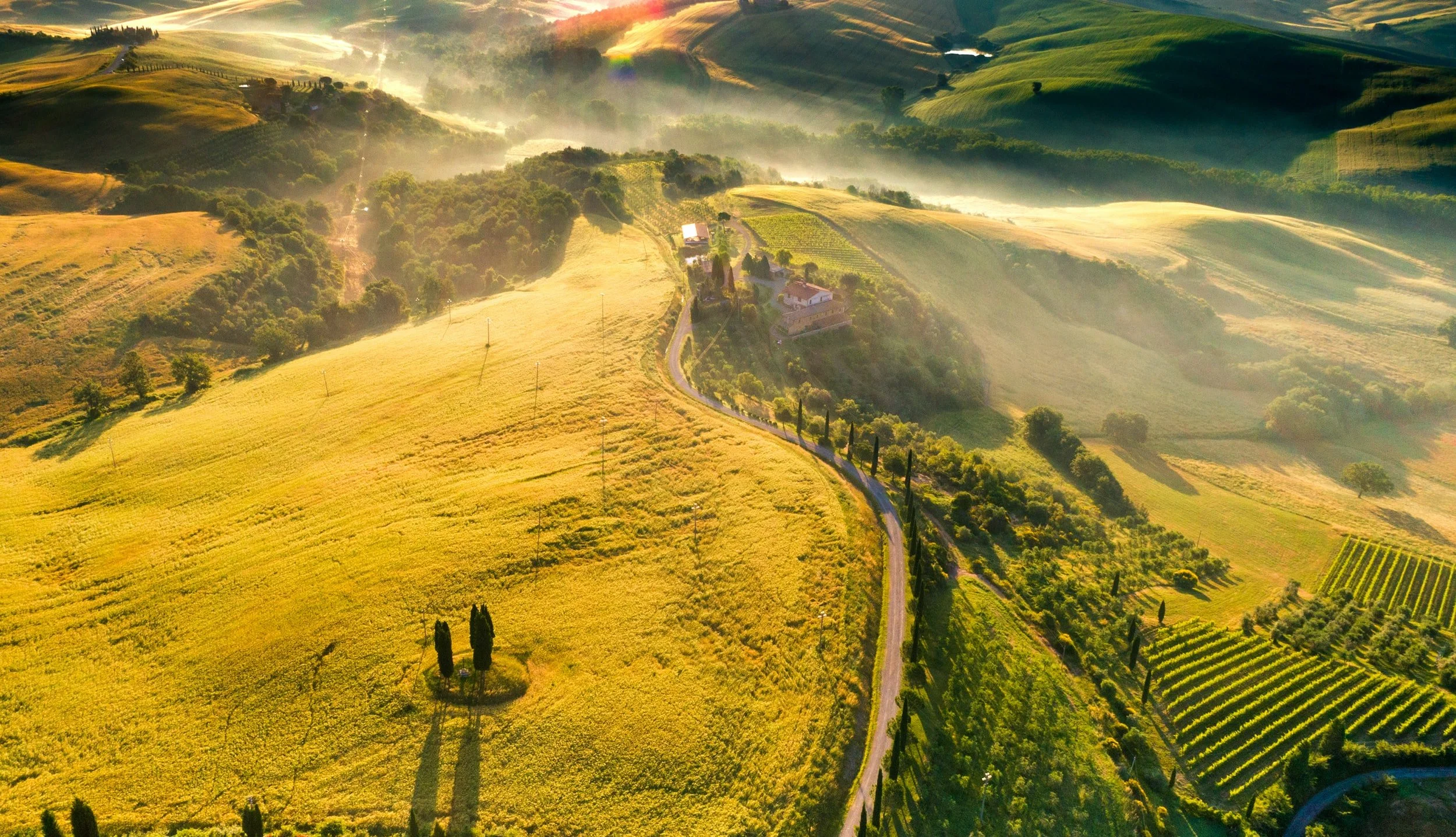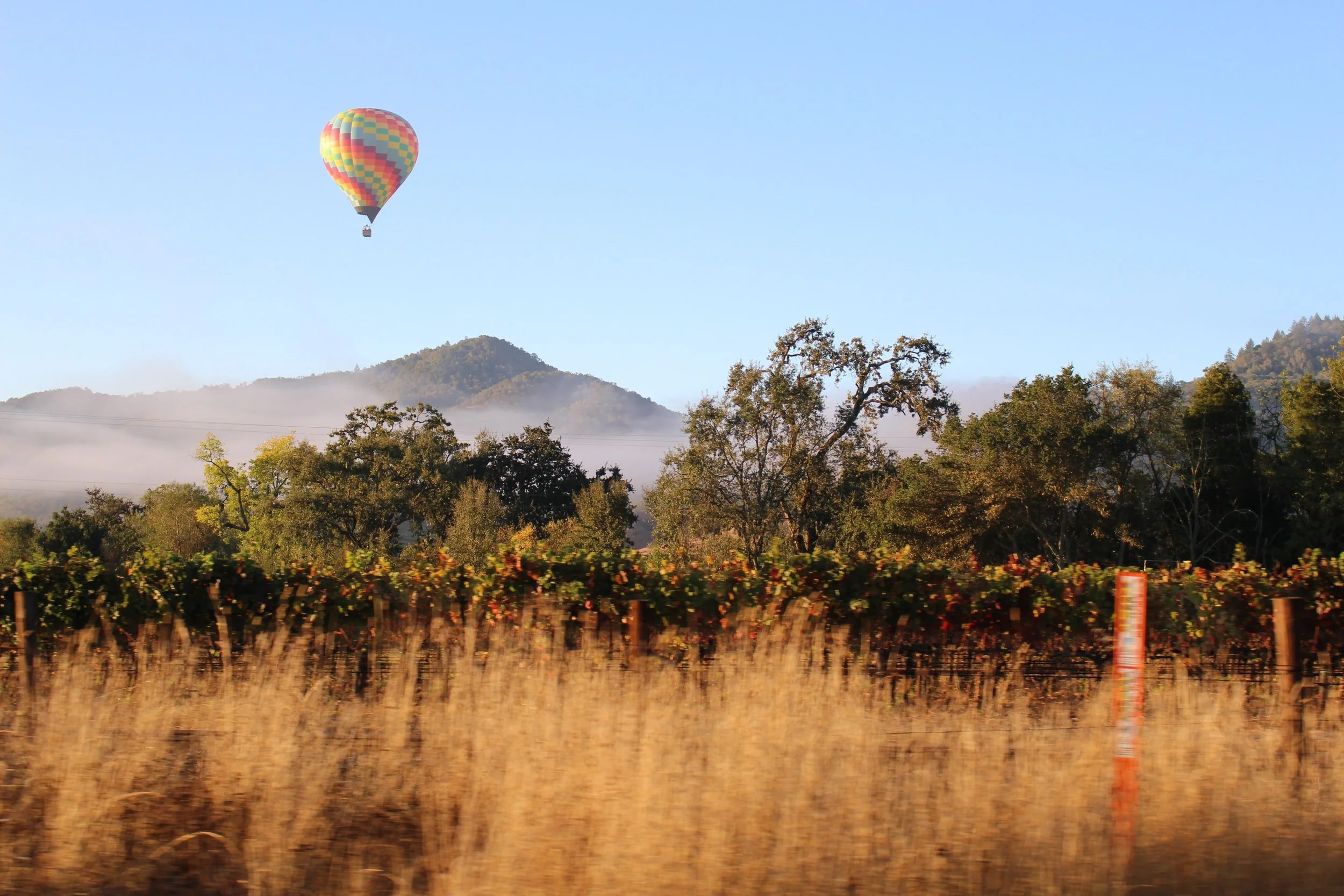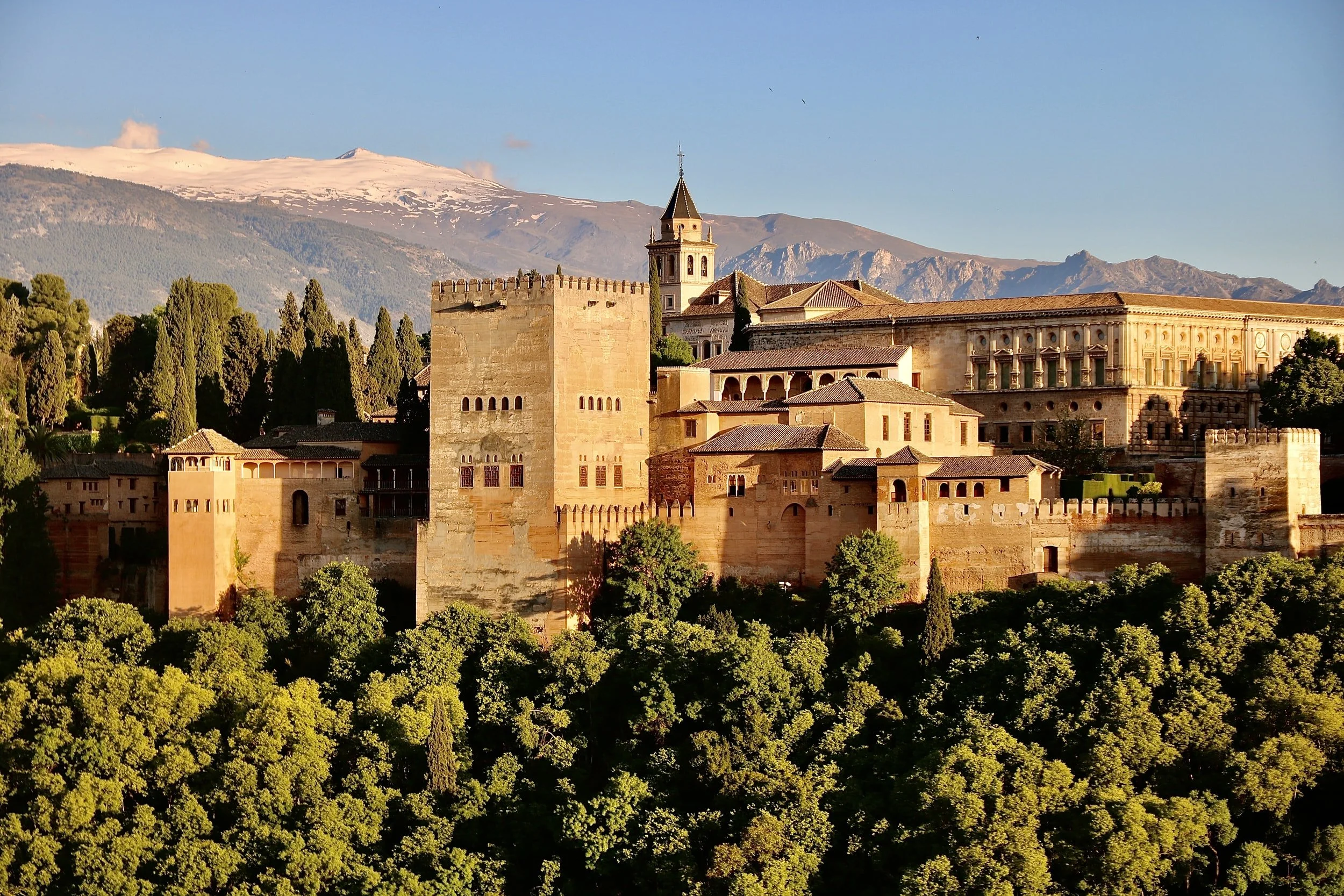THE 5 MOST COMMON WINE APPELLATIONS YOU WILL SEE AND HOW THEY HELP YOU DRINK BETTER WINE
Have you ever looked at a bottle of wine and seen a bunch of random letters on it? These letters are usually somewhere on the label, under the name of the producer. Sometimes they look like, “AOC” or “IGT” or “AVA.”
These letters are actually abbreviations for wine appellations, and they are really helpful things to take into consideration when you are in the midst of choosing a bottle of wine.
The more abbreviations for wine appellations you know, the easier it will be for you to level up your wine game.
What do abbreviations on bottles of wine mean?
AOCs, IGTs, WOs, and AVAs all mean the same thing:
They’re all abbreviations for appellations! HOORAY! The main difference is, these abbreviations are all from different parts all around the world. But before we break down the different abbreviations for each appellation or quality level and what it means, let’s talk about why there even are appellations in the first place…
It’s a French thing.
It all started with the Institut National de l’Origine et de la Qualité that was established in 1935. This branch of the French Ministry of Agriculture wanted to regulate the quality and differentiate certain wine producing regions in France.
A lot of this was done to protect terroir and the notion of wines having a sense of place. AOC laws ensure that when you buy a bottle of Champagne, for example, it is made a very specific way from very specific vineyard sites within the Champagne Appellation, and that it only uses three grapes. Chardonnay, Pinot Noir and Pinot Meunier. Without the AOC laws, a wine could be called Champagne but have some sort of crazy grapes like Cabernet Sauvignon or something in it. These AOC laws insure quality level and make sure certain grapes that thrive in those geographical areas are used.
The AOC laws also protect consumers from vignerons doing sketchy things to their wines, like limiting the amount of sugar winemakers can add to years when the grapes weren’t able to ripen enough. Other countries liked the AOC system and have come up with their own versions of it, so without further ado, I’ll take you through the different abbreviations for appellations around the world, the quality levels and what they mean.
FRANCE -
AOCs, AOPs IGPs and Vin de France
AOC - Appellation d’Origine Contrôlée
AOC wines have the highest level of quality. In France, you don’t just buy a Cabernet Sauvignon - you buy a wine from the Bordeaux AOC because you know that in Bordeaux, they specialize in red blends featuring Cabernet Sauvignon. So when you buy French wine, you are buying based on location - not varietal.
If you’re looking for a Pinot Noir, you should purchase wines from the Burgundy AOC. If you’re a Syrah fan, the Hermitage AOC would probably be a good bet for you to get that fix. A lot of those delicate, ballerina-pink Grenache based rosés that everybody loves so much come from the Côtes de Provence AOC.
AOP - Appellation d’Origine Protégeé
AOP means the same exact thing as AOC. AOPs are just used more broadly throughout Europe.
IGP - Indication Géographique Protégée
IGPs are a little less strict in terms of the types of grapes that can be used for IGP wines. They’re more of the regular, run of the mill, every day wines. With all that in mind, some IGP wines are awesome! I’ve had IGP wines that have been made in the Pays d’Oc (and featured them on this blog) that have had mixtures of Cabernet Sauvignon, Syrah, and other fun blends.
Vin de France
These are considered the most, “basic” types of wine with the fewest legislation laws in terms of the types of grapes that can be used. Yet again, with all that in mind, you can find some incredibly high quality wines that sport the Vin de France designation - and they usually are the most friendly on your budget.
Just know that a Vin de France wine is not going to have the same geographical regulations about the types of grapes that can be used in making it as an AOC wine.
ITALY
DOCs, DOCGs, IGTs
DOCG - Denominazione di Origine Controllata e Garantita
DOCGs are very similar to the French AOCs. They are considered the most prestigious classifications within Italian viticultural legislation. Interestingly enough, the DOCG classification is fairly new. It was created in 1980 when critics stated that Italian wine DOCs had too much deviation in terms of quality.
I’ll say this again - like AOCs, DOCGs don’t always mean that wines without the DOCG classification aren’t of a high quality. In fact, some of the priciest wines in Italy are considered IGT wines (of the lowest classification.) If you’ve ever heard of a Super Tuscan, then you would know what I’m talking about. We’ll talk more about that in a bit.
DOC - Denominazione di Origine Controllata
The second highest classification for Italian wine. DOC wines are the wines you will probably see the most out in the wild, because it’s the most common classification. There are 330 DOCs in Italy, and they all have their own specific viticultural laws that govern their winemaking style. If wines made in that DOC are of consistently high quality, they earn a promotion to DOCG status.
IGT - Indicazione Geografica Tipica
Now this is where things get really interesting.
Typically, IGT wines were sort of looked down upon until the 1970s. Now, the most expensive wines from Italy are considered IGT wines. Remember when I mentioned Super Tuscans earlier? Most Super Tuscans are classified as IGT wines. Here’s the reason why:
With DOC law, the grapes that are used in each wine must be indigenous to that specific area. For example - a wine that has a Tuscany DOCG can only use indigenous varietals like Sangiovese. When Super Tuscan winemakers wanted to use international varietals like Cabernet Sauvignon or Merlot, their wines were not allowed to have this prestigious qualification. They were initially classified as Vino da Tavola - the lowest classification.
It’s lowkey hilarious that an iconic Italian giant like Ornellaia, which was regularly held within the same cannon as Bordeaux heavy-hitters like Château Lafite Rothschild, was classified as “table wine.” But Italian winemakers fought back, and eventually the wines were classified as IGT - Indicazione Geografica Tipica. What this shows you is that these classifications, though they do guarantee quality in some circumstances, are really more meant to be general guidelines - not hard and fast rules.
Vino da Tavola
A word that literally means, “table wine,” in Italian. For a hot minute, when Super Tuscans were classified as Vino da Tavola, this classification held some prestige. Now it’s relegated back to the realm of everyday drinking wines. But that’s okay, you can still find some great Vini da Tavola to enjoy that won’t burn a hole in your wallet.
‘MURICA
AVAs
AVAs - American Viticultural Areas
The nice thing about American Viticultural laws are they don’t really do hierarchy. An AVA is simply a geographical designation that is classified by climate and characteristics of that terroir. There are no rules as to which grapes you can grow where and certain AVAs don’t have more prestige than others. It’s all very egalitarian.
There are currently 260 AVAs in the United States - that’s a lot! Some AVAs you might be familiar with are the Dry Creek Valley AVA in Napa, the York Mountain AVA in Paso Robles, and the Los Olivos AVA in the Santa Barbara County.
SPAIN
DOs, DOPs, DOCa, VPs, IGPs, VdMs
This is where shit gets complicated.
DOP - Denominación de Origen Protegida
Think of Spanish DOPs as a bit of an umbrella term. The DOP is what you see most of the time in reference to Spanish wine. DOPs are regulated by a consejo regulador, who decides the boundaries of each wine region, permitted varietals, maximum alcoholic strength of the wine, and the maximum yield for each wine DOP. There are currently 96 DOPs in Spain.
DOCa - Denominación de Origen Calificada
This is the highest level of Spanish wine classifications. Regions like Rioja and Priorat were awarded DOCa status in 2003. Those are the only two regions considered above DO status. DOCa wines tend to be the most expensive and have the strictest quality control in all of Spain.
DO - Denominación de Origen
DO is the most common classification given to Spanish wines. They fall under that DOP category, where the maximum alcoholic strength is regulated, as are the types of grapes used in each DO.
VP - Vino de Pago
This classification was formed in 2003 and roughly translates to, “estate wine.” These wines come from single vineyard estates and are usually of higher quality. Some wines can be classified as VP wines, but also be DO wines or even IGP wines.
VC - Vino de Calidad con Indicación Geográfica
This category was created in 2003, and it’s for wines that aren’t quite up to snuff in terms of quality to earn a DO status, but are above IGP wines. Does your head hurt yet?
IGP - Indicación Geográfica Protegida
IGP wines are considered below DOP quality wines. But these wines are from a specific place, region, or country that have certain characteristics associated with that country. IGP wines are similar to AVAs in a sense that they really are more about a geographically defined area than any quality level. These wines can also be labeled as, “Vino de Terra.”
VdM - Vino de Mesa
Basic table wine at the bottom of the Spanish wine pyramid. Inexpensive jug wines fall into this category. God. I look at all this stuff and remember I had to know all this for my Level One Sommelier exam. I have no idea how I managed to pass.
SOUTH AFRICA
WOs
WOs - Wines of Origin
The Wines of Origin system originated in 1973 and was, once again, modeled off of France’s AOC system. The most important thing with the WO system was geographical factors, such as soil, and climate of specific regions affecting the types of wine made there.
The most important thing about the WO system is if a wine claims to be from a specific WO, that it is really from there. 100% of the grapes must be from whatever WO is labeled on each bottle of South African wine. So if you’ve got a bottle of Stellenbosch that has WO on the label - you know all the grapes are from there.
Underneath WOs are the subcategories of “overarching regions,” “regions,” and “districts.” Wines that are made with grapes from overarching regions allow blends of grapes from different geographical areas. If a wine is from a region, it can be a blend of multiple districts. After that are districts, which are slightly smaller areas. The smallest delineation is called a “ward,” which could be as much as a small vineyard.
Wine appellations are complicated, I know — but they do help you drink better wine for 3 reasons.
REASON 1: If you know your wine appellations, you’ll know which appellations specialize in certain varietals.
For example, if you know about the Pomerol AOC on the Right Bank of Bordeaux, you’ll know that Pomerol specializes in blends with Merlot and Cabernet Franc. So the next time you want a Merlot dominant wine, you’ll search for wines from the Pomerol AOC.
REASON 2: If you know the quality levels associated with certain appellations (looking at you, Spain) you’ll be able to know which wines are considered “better,” because they have more stringent viticultural laws.
This means, with certain countries like Spain for example, you’ll know that if you purchase a wine with the letters DOCa on the label, the quality control is stricter than purchasing a wine with DOP on the label.
Honestly? Sometimes I even struggle wrapping my head around all the different quality levels, what they mean, and what to look out for.
Reason 3: You’ll know which appellations are better values.
This is only something that can be learned with time. Certain appellations tend to carry higher price points simply because they have what I like to call, “the prestige factor.” For example, Pomerol wines tend to be pretty pricey, but the lesser-known appellation Lalande de Pomerol has relatively inexpensive wines that still have a high quality level.
It’s tough, I know. But learning about your appellations - or at least taking them into consideration - is definitely worth it.
The only way to learn your appellations is to drink wine from all of these different places and really study the labels on your bottles.
So without further ado, let’s get to the—
PICK OF THE WEEK: TRIMBACH RIESLING 2020 $17.99 @ Total Wine & More
Some producers are simply worth knowing. Trimbach is one of them.
This Alsatian winery produces some of the benchmark expressions of Riesling, Gewürtztraminer, and Pinot Blanc in the region. Trimbach is about as classic to Alsace as… denim is to the United States. It’s just one of those wineries that epitomizes that region.
Not only that, but Trimbach is consistent from vintage to vintage and pretty affordable considering value for dollar. If I’m looking for a stellar Riesling or Gewürtz and I see Trimbach on a menu, I’ll probably order it because I know it’s gonna be good. And chances are, Trimbach is one of the bigger producers from that region so you probably will see this wine in the wild.
This is NOT a typical Riesling from the Mosel. It’s not delicate and there isn’t any residual sugar. So if you like your Rieslings to lean more on the citrus side of the spectrum - ding ding ding, Trimbach is a winner!
Picture aromas of lime, petrol, and ginger, raging around in your glass. This Riesling is all about power and it has loads of body. In fact, I’d wager you could probably age this puppy for a few years to see how some of those citrus aromas mellow out and turn into more honeyed aromas.
Trimbach Riesling is an LBD wine. It goes with pretty much everything. But if you need some suggestions, I’d wager you could pair this wine with some Tofu Pad Thai drizzled with fresh squeezed lime and be a very happy person. It would probably be fantastic with sushi as well.
See you next week, Thurstqueens!









